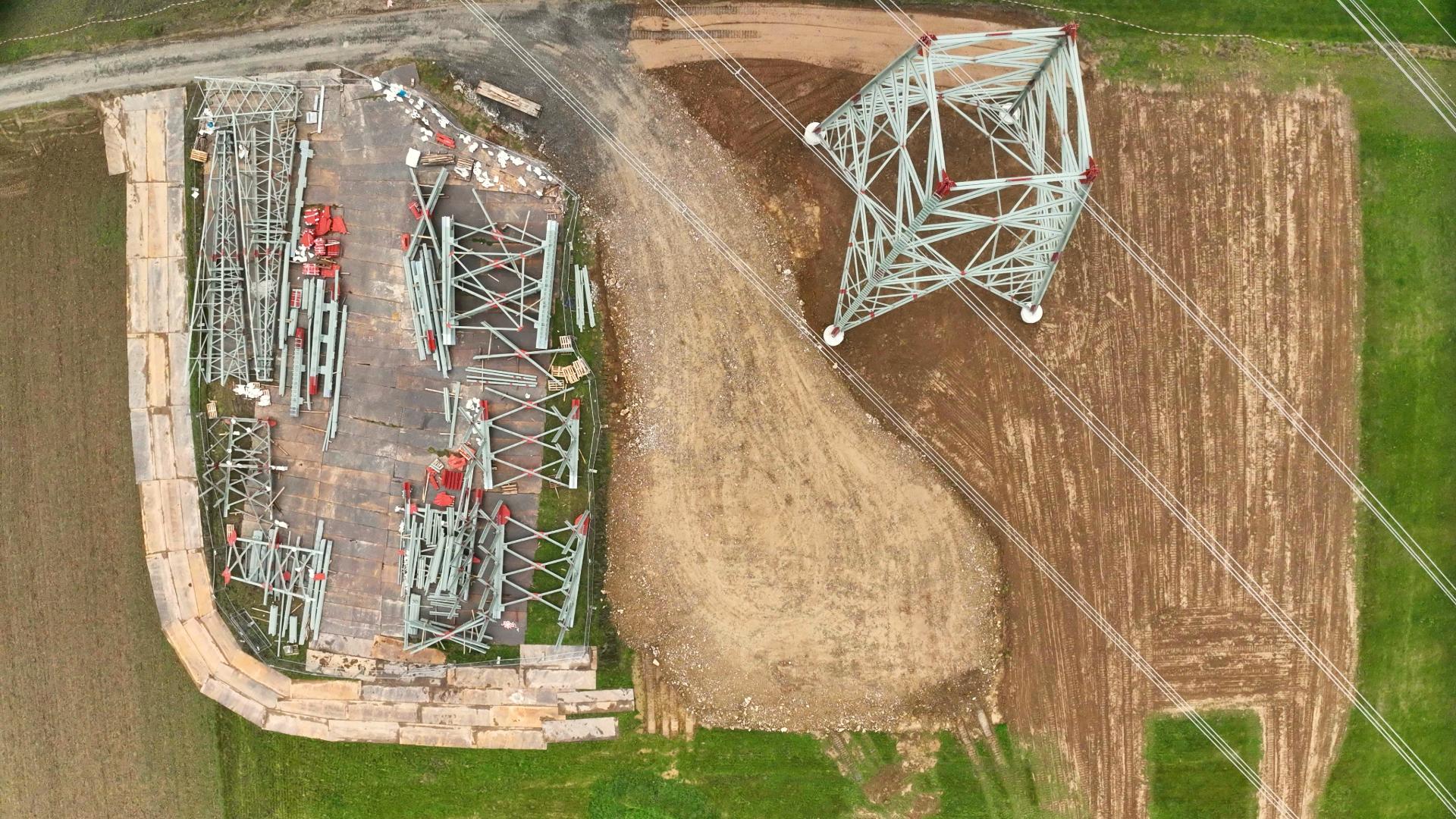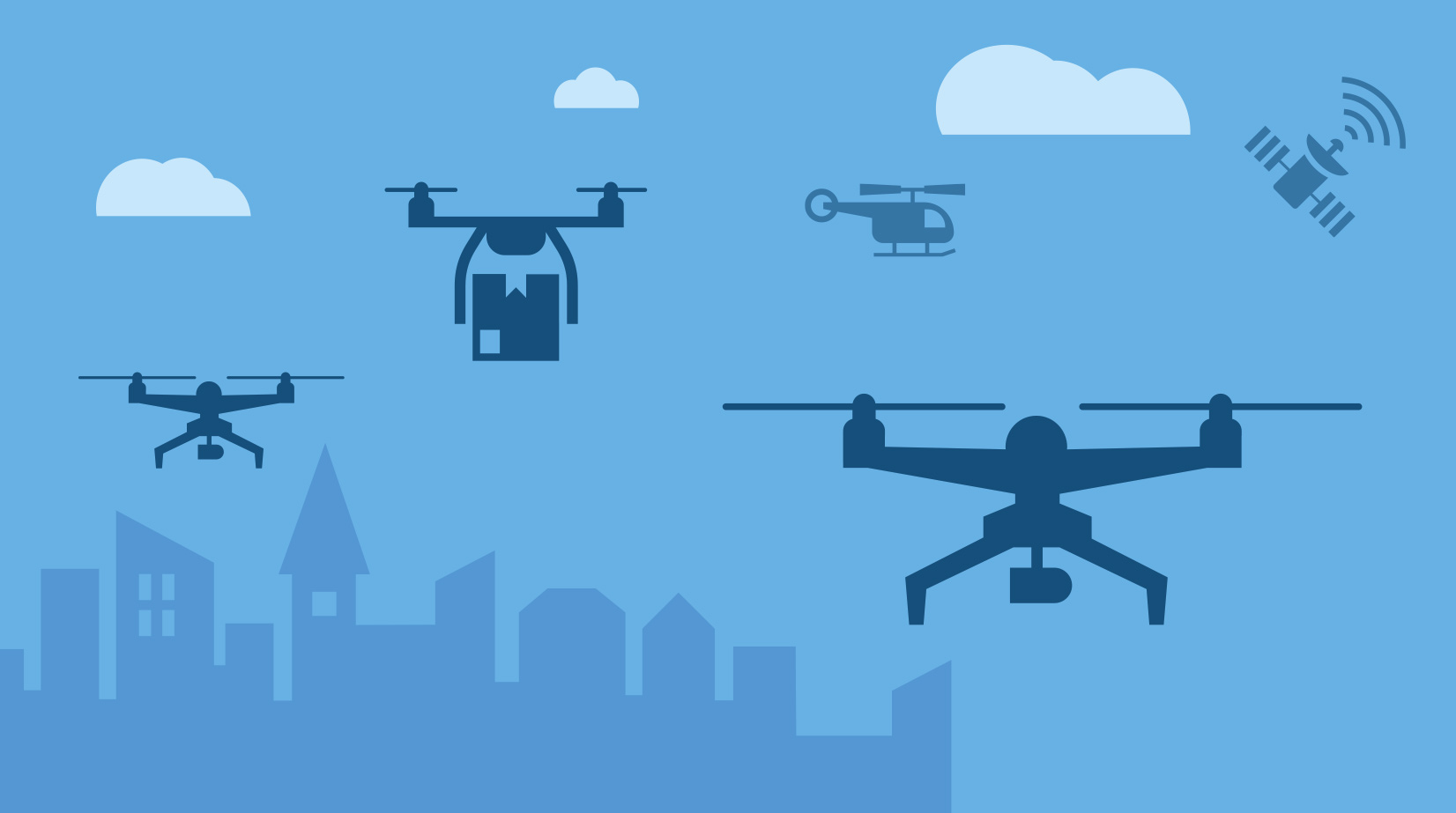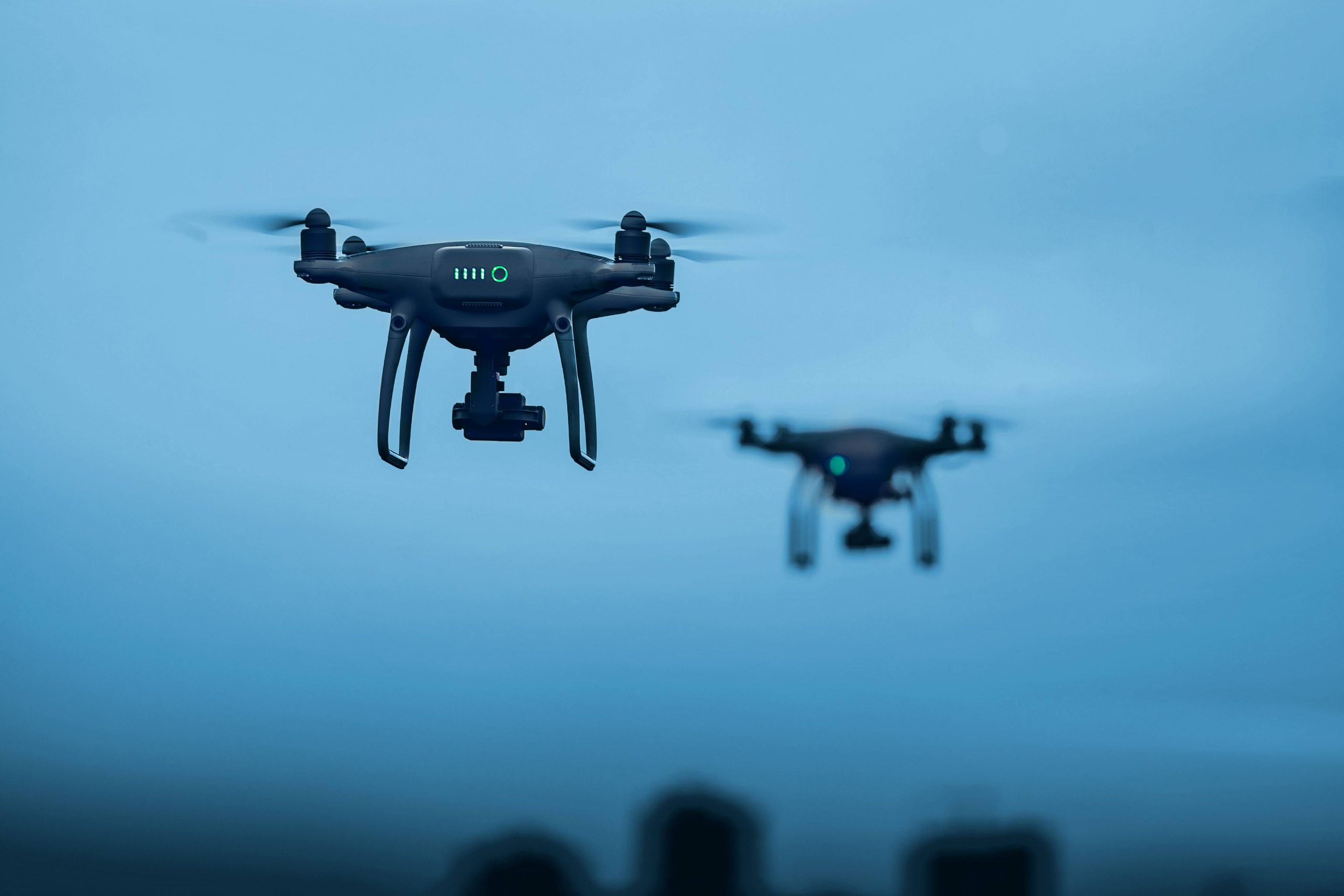Urban Air Mobility (UAM) ist das Thema der Stunde
In allen Medien war es die letzten zwei Wochen präsent, denn am 11. März 2019 ist in Ingolstadt das erste Flugtaxi von Airbus mit dem Namen CityAirbus vorgestellt worden. Ingolstadt ist neben Hamburg eine der beiden EU-Modellregionen für den Test der Urban Air Mobility (UAM).
Anwesend bei der Vorstellung war neben Verkehrsminister Andreas Scheuer (CSU) und zahlreichen lokalen Politikern auch Digital-Staatssekretärin Dorothee Bär (ebenfalls CSU). Dieses Fluggerät soll der Personenbeförderung dienen und verbindet Digitales und Verkehr.
Es gibt jedoch einige Aspekte, die zeigen, dass dieses Fluggerät (leider) noch Zukunftsmusik ist
Die 8-rotorige Maschine wurde zwar vorgestellt, aber ihre Funktion konnte nicht gezeigt werden. Dies mag daran liegen, dass das Fluggerät möglicherweise noch nicht einsatzfähig ist, vielmehr liegt der Grund jedoch eher an der aktuellen Gesetzeslage für unbemannte Fluggeräte.
Derzeit darf dieser Copter nicht über Stadtgebiete fliegen, denn hierzu bedarf es u.a. an Genehmigungen für jeden einzelnen Flug. „Kurz mal eben abheben“ ist nicht ohne Weiteres erlaubt. Über Menschenmengen, wie sie bei einer Vorstellung auf einem Marktplatz zu finden sind, ebenso wenig. Laut aktueller Gesetzgebung dürfen unbemannte Fluggeräte zudem nur auf Sicht geflogen werden. Der CityAirbus verfügt aber über eine Reichweite von 50 Kilometern und soll vorerst auf festen Flugrouten zwischen Flughäfen und festen Landeplätzen in Zentren pendeln. Es ist also weniger ein Flugtaxi, sondern wie der Name schon zeigt ein Bus. Die Vorteile des CityAirbus gegenüber herkömmlichen Helikoptern scheinen derzeit nicht ersichtlich.
Wir sind der Meinung, dass ein Flugtaxi mit festen Routen und Landeplätzen nach derzeitigem Stand keinerlei Vorteile für die Mobilität der Bevölkerung bietet. Die Kosten für dessen unbemannten Einsatz wären aktuell schlichtweg zu hoch, als dass die Masse der Bevölkerung einen nachhaltigen Vorteil daraus ziehen könnte. Zumal das hohe Abfluggewicht und der Personentransport an eine Vielzahl von Regeln gebunden wäre.
Nach heutigem Gesetzesstand müssen Streckenposten eingesetzt werden, aber dies würde einen erheblichen Personalaufwand bedeuten. Mit Sicherheit wird der Einsatz eines Unmanned Aircraft System Traffic Management (UTM) hier in Zukunft Abhilfe schaffen und die Kosten für das eingesetzte Personal senken. Gegenwärtig muss man jedoch die Kosten für diese Streckenposten zusätzlich zu den Entwicklungs-, Produktions- und Betriebskosten eines Drohnenprojekts berücksichtigen. So gesehen klingen die versprochenen 15 Millionen Euro des Förderprogramms BMVI nicht mehr so üppig, wie von Verkehrsminister Scheuer angepriesen. Heruntergerechnet auf sogenannte Schnelläufer-Projekte mit 500.000 € oder die Förderung von Studien mit 100.000 € erst recht nicht.
Es bedarf neben der Einhaltung der vielen Regeln und Gesetze auch noch weiteren Voraussetzungen, die derzeit noch nicht gegeben sind. Für einen geregelten Ablauf des Luftverkehrs mit Drohnen ist die Netzabdeckung mit 5G zwingend erforderlich, denn nur dieser Standard verspricht eine nahezu latenzfreie Datenübertragung. Derzeit wird jedoch erst ausgehandelt, welcher Netzbetreiber überhaupt einen Zuschlag bekommt, um sein 5G-Netz ausbauen zu dürfen. Es wird daher noch einige Zeit vergehen, bis dieser Kommunikationsstandard flächendeckend verfügbar ist.
Damit die Kommunikation, Ortung und Vernetzung aller (Flug-)Teilnehmer gewährleistet werden kann, sind aber auch noch andere neue Techniken notwendig, die teilweise noch gar nicht entwickelt wurden. Es wird daher nicht von einer Realisierung des autonomen Betriebs innerhalb der nächsten zehn Jahre ausgegangen. Zusätzlich zu den technischen Herausforderungen sind, analog zum autonomen Fahren, noch diverse Hürden zu überwinden und rechtliche Rahmenbedingungen zu schaffen..
Eine nicht zu unterschätzende Hürde ist die Akzeptanz in der Bevölkerung beim Thema Urban Air Mobility.
Airbus hat dazu eine Studie durchgeführt und in Los Angeles, Mexico City, der Schweiz und Neuseeland 1.540 Leute befragt. 44 % der Befragten unterstützen den Einsatz von Flugtaxis. Dabei variiert die Zustimmung jedoch je nach Gebiet. In Mexico City war die Zustimmung mit 67 % der Befragten am höchsten. 19 % standen UAM neutral gegenüber. In Neuseeland hingegen ist die Zustimmung mit 27 % am geringsten. 25 % der Befragten stehen dem Thema Flugtaxis hier neutral gegenüber. Betrachtet man das Alter der befragten Personen, so lässt sich ein deutlicher Unterschied in der Akzeptanz feststellen. Bei der Gruppe mit dem Alter 25 bis 34 ist die Zustimmung mit 55 % recht hoch. Wohingegen in der Altersgruppe 75 bis 84 nur 15 % UAM als positiv bewerten. Auch die aktuell benötigte Pendelzeit der Befragten hat einen Einfluss auf die Akzeptanz von UAM. Menschen, die durchschnittlich mehr Zeit für das Pendeln aufwenden müssen, unterstützen den Einsatz von Flugtaxis. Zudem lässt sich der Trend erkennen, dass Männer eher zustimmen als Frauen. Zu den fünf am häufigsten genannten Sorgen bei dem Einsatz von unbemannten Fluggeräten gehören:
- Sicherheit der Objekte und Individuen am Boden
- Lärm, den die Geräte verursachen
- Art der Geräusche, die von den Geräten verursacht werden
- Zeitpunkt der Beförderung am Tag/Nacht
- Flughöhe der Geräte
Zu den Sorgen und Ängsten der Bevölkerung kommen die Anforderungen, die an den Komfort und die Qualität der Geräte gestellt werden. Die Automobilhersteller werden von der Bevölkerung als Produzent von Flugtaxis bevorzugt. Das liegt unter anderem an der Markenbekanntheit und den damit verbundenen positiven Erfahrungen in den Bereichen Sicherheit und Qualität. Die Verbindung von UAM und autonomem Fahren ist dabei als Gesamtkonzept für die Mobilität der Zukunft zu begreifen. Beide Bereiche haben viele Überschneidungen bei Aspekten, die eine ähnliche Technologie benötigen, wie z. B. Routingalgorithmen. Gerade deutsche Automobilhersteller haben hier einen guten Stand und können in der Zukunft von Synergieeffekten profitieren. Laut einer Studie wird die Produktion von Flugtaxis allerdings nur fünf Prozent am Gesamtmarkt ausmachen. Der Betrieb wird mit maximal einem Drittel beziffert. Der größte Anteil wird mit 55 % auf die Flugvermittlung und zusätzliche Services (z.B. Infotainment, etc.) entfallen.
Unabdingbar für die Urban Air Mobility sind valide und offizielle Geodaten. Die in unbemannten Fluggeräten eingesetzten Navigationsgeräte müssen über solche Daten verfügen, um einen sicheren Flug gewährleisten zu können. Bisherige Mobilitätslösungen dürfen beim Einsatz dieser neuen Technologie nicht gestört werden und die Sicherheit muss an erster Stelle stehen. Das Ziel von FlyNex ist es, den Einsatz von Drohnen zu erleichtern und diese Technologie allen Wirtschaftszweigen zu ermöglichen. Im urbanen Umfeld sind allerdings noch einige Hürden zu nehmen, damit aus der Zukunftsvision auch eine sichere und verlässliche Realität wird.
Projekt WinDroVe in Hamburg
In Hamburg ist FlyNex am Projekt WinDroVe beteiligt, welches die wirtschaftliche Nutzung von Drohnen in Metropolregionen untersucht. Das Modellprojekt soll ermöglichen, dass durch den Einsatz von Drohnen Gewebeproben zwischen zwei Krankenhäusern transportiert werden. Der Drohneneinsatz soll schnellere Ergebnisse liefern und dadurch zu kürzeren Liegezeiten bei Patienten führen. Mehr zum Thema WinDroVe erfahrt ihr in unserem Podcast DrohneFM.
Mithilfe unserer Projektmanagementsoftware HORIZON können Flüge samt kompletter Streckenführung geplant werden. Neben dem Flottenmanagement sind vor allem unsere Kartendaten für dieses Projekt enorm wichtig. Mit HORIZON können zudem Projektdaten mit verschiedenen Stakeholdern ausgetauscht werden.
Valide Geodaten ermöglichen, dass gesetzeskonforme Flugrouten geplant werden können. Unsere Lösung zeigt direkt beim Erstellen einer Route an, welche Gesetze und Auflagen für diese einzuhalten sind. Dies spart sehr viel Zeit ein, da die Recherche nach geltenden Gesetzen bzw. Regeln für ein bestimmtes Gebiet entfällt. Während das manuelle Erstellen eines Flugplans mindestens 5 Stunden dauert, ist es mit unserer Lösung möglich, das Ganze in 30 Minuten zu bewältigen. Der daraus resultierende Flugplan ist überdies genauer, da er auf Geodaten beruht, die aus über 165 verschiedenen offiziellen Datenquellen stammen.
Ihr FlyNex Team







